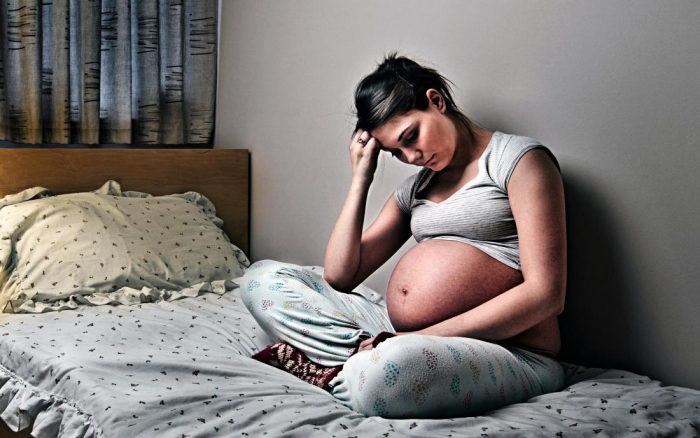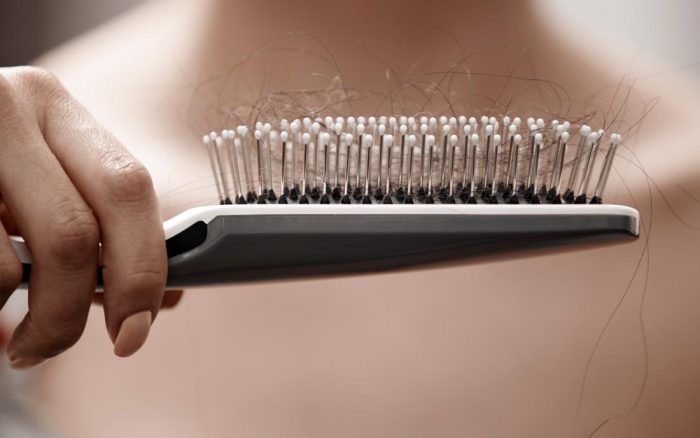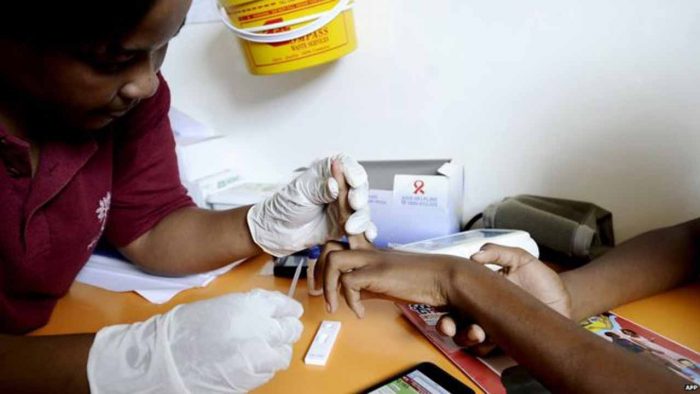As the world marks the 2019 World Aids Day today, stigmatisation and discrimination against Persons Living With HIV/AIDS (PLWHAs) remain the twin factors frustrating a successful fight against the dreaded scourge.
Not only have they prevented people from coming forward to know their status and consequently commence early treatment where result turns out positive, these factors also pose a threat to meeting the 2030 global target to end AIDS.
For PLWHAs, the constant psychological trauma they contend with at treatment centres and in communities where they live further makes life difficult. In fact, the reality of living with a life-threatening ailment finds expression daily in the discriminating and stigmatising behaviours directed at them within their environment.
For instance, “You this dead woman, a living corpse, leave my house!” was how Funmi Okafor, a mother of four children was welcomed as she returned home from the hospital after receiving the news that she tested positive to Human Immunodeficiency Virus (HIV), after weeks of constant sickness that defied treatment.
Okafor, who was squatting with a friend, (alongside her kids) after the death of her husband, met her belongings outside, drenched in rainwater, while her friend stood by the door post yelling at her to move away with her children.
With nowhere else to put up, she was forced to move into an incomplete building as her new home.
The mother of four’s journey to this sad realisation started when she noticed rashes on her body, while she was constantly ill and began to lose weight in the process.
With the constant illness, which she thought was malaria fever (as many people would think first), she, however, decided to visit a nurse, whom she told about her constant “malaria fever.”
The nurse took her blood sample to the laboratory to carry out malaria, typhoid, and HIV tests. And on confirming the cause of Okafor’s ailment, the nurse, due to lack of knowledge about patient’s right to confidentiality, refused to inform Okafor that she tested positive to HIV, but rather spread the news around the community where she lived in Edo state.
Determined to know the ailment that has caused her to emaciate, with rashes all over her body, Okafor visited a general hospital, where after the test she was pronounced HIV positive.
“I went to a nurse and told her that I had malaria fever. She took my blood sample to the laboratory. But instead of her disclosing my condition to me, she told my friend, who spread the rumour around. I still was not aware of my status because she did not disclose it to me. It was only after I went to the general hospital that I knew my condition.
“The day I was supposed to be placed on drugs, it rained heavily, and by the time I returned to where I squatted with my children, my host had thrown out all my belongings. After yelling at me and calling me names, I packed what was left of my property and moved,” she recalled.
Before long, Okafor became the butt of jokes in the community where she lived in Edo State, and others avoided contact or any relationship with her. Since she could not stand being ostracised like that, she relocated to Lagos with her children.
She lamented: “It is not easy to cope with life when you are HIV positive. My father and husband are late, while my mother and siblings are in the village. But I was almost alone in the world before I relocated to Lagos because everyone started deserting me,” she said.
CHINWE IKE was pregnant when she discovered that she was HIV positive. She felt like taking her life and for several nights thoughts of suicide assailed her, especially because she did not know what the virus was all about, as people kept saying different things about it.
At the early stage of her pregnancy in 2006, she was on admission to a hospital for one week before she was transferred to another hospital for further treatment.
However, when she went into labour, her HIV status was confirmed in a private hospital, and the doctor in charge of the case requested that she invited a trusted relative over, who would thereafter break the news to her in a calm manner, and get her to accept her condition.
“I decided to invite my friend, who is a nurse instead of a relative. Unfortunately, after she heard of my condition, she went about scandalising me to the extent that my landlady came to me one day and asked me to leave her house. It was afterward that I discovered that it was that my nurse friend that fed everyone with details of my HIV status. Since my landlady insisted that I should leave her apartment, I did,” she said.
Ike added that it was after she left the compound before she started understanding many things about the disease, her rights as a Person Living With HIV (PLWHA). “Just because I did not know anything I had to leave the compound because they were threatening to kill me. Since then I have been living with that stigma and picking up the pieces of my life.
“It is 13 years now and I am still alive. My friend told me then that I had dug my grave, but after some years, I went back to my former neighbourhood for them to see that I am still alive, and when they saw me, most of them were surprised. However, because of the scandal, I lost my job as a secretary/cashier at a company located at the Alaba International Market, Lagos.”
Since 2001 that Chika Nnoroka discovered that she and her 18-month-old son were HIV positive, she has faced extreme stigmatisation and discrimination, not only in her community but also at medical facilities.
She narrated, “The stigmatisation and discrimination got so intense that I did not believe that I and my son would survive. People were keeping away from us, even the doctors and nurses were all stigmatising people living with HIV to the extent that most of us were finding it difficult to go to the facility to access treatment.”
Nnoroka said women were more vulnerable to HIV/AIDS stigmatisation, as many that have lost their husbands were being denied by their family members and friends. Their rights and privileges are also denied.
“By the time I got information from the doctor that there was a treatment to suppress the virus, I was a little bit relieved, but I was afraid for my little son, who just came into this world. I was not bothered about myself,” she said.
Chika’s son, who is now a 20-year-old, is waxing strong with the help of the drugs.
Misconceptions On Mode Of Transmission
Okafor, who has lived with the virus for 19 years said, “most people think that all women living with HIV are prostitutes. My husband was the one that deflowered me; you can contract HIV/AIDS from anywhere.
“I want people to change the narrative that ladies living with HIV/AIDS are wayward, I believe that is why people do not want to come out to check their status or speak up that they have the virus.”
Okafor who narrated how she contracted the virus said, “It was late but the symptoms in my husband’s body showed that he had HIV and he lied to me that it was severe cough. His close friend was the one who disclosed to me that my husband was HIV positive and that his family is keeping it away from me. He said I should go and check myself if I also have the virus.
“I did my test and found out that I was positive. My husband was never a womaniser; I suspect he contracted HIV when he was stabbed him in the chest. He had internal bleeding in his lungs and the hospital asked us to get nine pints of blood, this was during the early 1980s. I strongly believe that it was then that he contracted the disease.”
Ike on her part said: “I am somebody that does not flirt around, I contracted HIV through my husband. It was when I got married to him that I discovered that I had the virus. Initially, I could not believe that I was down with that kind of health problem.”
According to the World Health Organisation (WHO), HIV can be transmitted through close contact with specific body fluids of persons living with the virus. Apart from fluids such as blood, semen, and breast milk; unprotected sex, body piercing equipment, or sharp objects are also vehicles of transmission. Transmission can also be done through mother-to-baby during pregnancy and through contaminated blood transfusion.
‘Cost’ Of Drugs Limiting Access To Treatment
With many of the people living with the virus jobless, and without hope of employment, affording the drugs for treatment and other medical procedures becomes difficult.
Ike said: “These drugs that we are taking are to sustain our lives and we have to eat well before taking them. What I am emphasising on is that the government should help us because right now, we are paying for drugs, and not everyone can afford it. We pay N2, 000 for consultation; N1, 000 for drugs and almost N3, 000 for laboratory. Not everybody that is HIV positive can afford it, so we are begging the government to help people living with HIV, by making drugs and treatment procedures free. It is laughable when we are told that the drugs are free of charge, and when we get to the hospital we are told to pay for the procedures that I have mentioned.
Implications
Findings by The Guardian reveal that because of rising stigmatisation, many people living with HIV/AIDS are staying away from hospitals, while those who suspect their status do not make themselves available for examination. Because of all these, and the inability of many to access treatment early, more people are getting infected and dying from the virus.
This is also why some cases have remained undetected, a development that poses more danger to the country, as those who are unaware of their status could infect others, thereby increasing the spread of the virus.
Ike, who revealed an earlier encounter, which nearly ended her life said: “When I went to a laboratory to do another test to confirm my status, the lab scientists told me that people with the virus can neither get married nor have children. With that impression, I refused to go to the hospital or any other institution for treatment. I concluded that I would commit suicide at home one day.”
Ike who lost her husband to the virus continued: “Because of this stigmatisation people find it difficult to disclose their HIV status because once they do, the news spreads so fast and then sooner than later they are shut out of their families and the society. Where I reside now, I have kept my HIV status a big secret.
“Some people do not even believe that there is something like a discordant couple, where either of the partners is negative, while the other is positive. The reality is that when two people are dating and then one discloses his or her HIV status to the other, the relationship breaks up immediately because they do not believe that those who are positive can have children who are HIV negative,” she explained.
Ike added that her refusal to take treatment cost her two-month-old her life after she developed cough and died. This made her summon courage and head to head to the hospital for treatment.










